Вы здесь
Ferghana Valley.

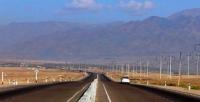
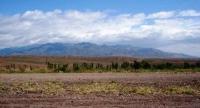

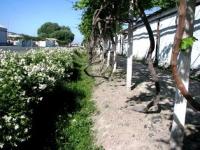
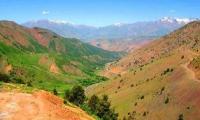



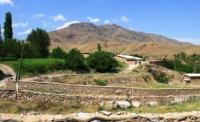
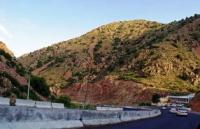

Tours in the Ferghana Valley.
«Nature does nothing without purpose or uselessly»
Aristotle.
Sights of the Ferghana Valley.
Ferghana Valley, Ferghana Basin - the intermountain basin between the Tien Shan systems in the north and Gissar-Alai in the south, in Uzbekistan, Kyrgyzstan and Tajikistan. In the west, the Ferghana Valley connects with the Hungry Steppe.
The length of the valley is about 300 kilometers, the width is up to 170 kilometers, the height of the bottom of the valley is from 330 to 1000 meters. In the southeast, the Adyr band is widespread, in the northwest, low mountain spurs.
The administrative affiliation of the Ferghana Valley is part of three regions of Uzbekistan (Namangan, Andijan, Ferghana), three regions of Kyrgyzstan (Japal-Abad, Osh and Batken) and the Sogd region of Tajikistan (divided in 1920).
The largest cities in the Ferghana Valley are Khujand (formerly Leninabad) - Tajikistan, Kokand, Ferghana, Namangan, Andijan - Uzbekistan, Osh - Kyrgyzstan. The most important passes are located on the territory of the Ferghana Valley - Taldyk pass, 3,650 meters above sea level, Chiyirchik pass 2,406 meters above sea level, Kamchik pass, Shakhristan pass, Anzob pass 3,379 meters above sea level, Kichikalai pass 4102 meters above sea level and others.
In the most arid western part of the valley there is a belt of mountain semi-desert with unpretentious wormwood, and in the central part lies the steppe, with sands and salt marshes, with semi-desert and desert vegetation.
The geological structure of the Ferghana Basin is a tectonic trough filled with loose sediments - the products of the destruction of the mountains framing it. The flat accumulative bottom of the basin is composed of Quaternary alluvial sediments; on the terraced surfaces rising from west to east, conduits for the discharge of river channels are superimposed.
The southeastern part of the valley is separated by a strip of hills from Neogene and Quaternary sediments. Behind the Adyrs there are foothills composed of limestones and schists of the Meso-Cenozoic and Paleozoic.
In the northwest, along the Syrdarya River, low ridges of paleogene-Neogene colorful flowers stretch - Mount Okbel 854 meters high above sea level and Mount Mehautauk 1009 meters high above sea level. Only in the west the valley has a natural exit towards the plain Hungry steppe - through the narrow passage near the city of Bekabad - the so-called Khojekent Gate, opening the Syr Darya path (a reservoir was built in this section).
The Great Pamir, South Kirghiz and Uzbek tracts can leave the valley from the valley. There is a Ring Ferghana Railway, two international airports in the cities of Kokand and Ferghana. The main river of the Ferghana Valley is the Syr Darya River and its tributaries (Sosh, Naryn, Kyzylsu, etc.).
The Syr Darya flows from the Pamir Mountains to the Ferghana Valley, while it is surrounded by the peaks of the Tien Shan - the chain of Chatkal Mountains in the north, Fergana in the east and Pamir-Alai in the south.
In the Ferghana Valley are located - the Big Ferghana and South Ferghana canals, the Kairakkum reservoir, in Tajikistan, located at an altitude of 347 meters above sea level. The Ferghana Valley is called the heart of Central Asia.
The Ferghana Valley is home to 12 million inhabitants, including the population of Uzbekistan, Kyrgyzstan and Tajikistan. The Ferghana Valley is the most densely populated region in the world. In the Central Asian region, there are 14 people per square kilometer, then the population density in the Ferghana Valley is from 300 to 500 people per square kilometer.
Ferghana Valley, a region in Central Asia that includes the territories of Uzbekistan, Tajikistan and Kyrgyzstan. Most of the region is occupied by a fertile valley, at an average height of 400 - 500 meters above sea level, open in a south-westerly direction.
Ferghana Valley for its wealth and picturesqueness is called the pearl of Central Asia. Ferghana Valley ancient culture. From ancient written Chinese sources we learn that in the valley from the III century. BC e. to V century n e. there was a developed state of Davan (translated "very beautiful, picturesque place"), or Parkan, with its capital in Ershi (the ruins of the fortifications are from the modern village of Markhamat in Uzbekistan).
Archaeological excavations have shown that there were at least 70 large and small very fortified sites in Davan. In ancient Chinese chronicles, Davan is described as the intersection of the influences of the civilizations of Ancient Greece, Bactria, China and Parthia.
The oldest cities and pre-Islamic cultures were almost not preserved, they were destroyed by time, wars and earthquakes. It happened with Aksukent, it was a fortified city with a citadel and powerful fortress walls, the capital of the Ferghana Valley from the X to XIII centuries.
But then the city was destroyed by the Mongols, and in the XVII century - a strong earthquake. Its ruins are located near Namangan. One of the oldest cities in Central Asia - Margilan celebrated its 2000th anniversary.
In the XI century, it was the largest city of the Ferghana oasis, famous for its silk fabrics (and now the city is famous for craft traditions and the "khan-atlas" - silk woven and hand-dyed according to ancient technology).
The new flourishing of culture in the Ferghana Valley is associated with one of the three strong Uzbek states - the Kokand Khanate, whose rulers considered themselves direct descendants of the Sultan Babur. The legendary founder of the Mughal dynasty, Babur (paternal Timurid, that is, a descendant of Tamerlane, maternal Genghiside, a descendant of Genghis Khan), was really born in Andijan in 1488.
He was the ruler of Ferghana in 1494 - 1504. After the conquest of the Kokand Khanate by the troops of the "white general" M.D. Skobelev in 1876 on the site of the abolished khanate, the Turkestan governor-general of the Russian Empire was formed first, then after the February Revolution of 1917 it was an unrecognized Turkestan autonomy.
In 1924, the Soviet government conducted a national demarcation, drawing the borders of three new republics along the Ferghana Valley. Ferghana Valley is the center of Uzbekistan. More than 7 million people, about 3 of the entire population, live on this fertile plain of the Syr Darya River.
It is known that the Ferghana Valley has always been subject to floods and natural disasters. “A powerful earthquake and flood in the 17th century forced the inhabitants of Namangan and other cities to relocate. The earthquake of 1920 destroyed many settlements, thousands of people died.
The climate of Ferghana Valley is continental, dry. The mild climate of the Ferghana Valley, which has a growing season of 240 days a year. Relatively mild winters, warm summers, dry air, light cloud cover, sharp fluctuations in temperature between day and night and a small amount of precipitation.
Average January temperature: -2.5 ° C. Average July temperature: + 26 ° C (up to + 40 ° C). Average annual rainfall: from 100-120 mm at the bottom of the basin to 500 mm on the eastern slopes. Ferghana Valley is an agrarian zone, ideal for farming and livestock breeding.
Natural resources of the Ferghana Valley - oil, gas, coal, copper, iron, polymetallic ores, antimony, sulfur, mercury, rock salt, etc. Industry - mining, machine building (assembly plants), chemical (production of mineral fertilizers), building materials, light (cotton processing), food, etc. Oil refineries and automobile manufacturers have mastered the Valley.
This is the heart of Central Asia in terms of the cotton industry, the second largest in the world in terms of volume. Agriculture - agriculture (Ferghana Valley - a large area of cotton irrigation, sericulture and viticulture.
There are rainfed crops in oases - cotton crops, in places rice, orchards, vineyards, melons, vegetable gardens. In the center of the Ferghana basin, virgin desert lands are being developed, used for agriculture livestock breeding (areas of desert plains serve as year-round pastures, and Adyrs with ephemeral vegetation serve as spring pastures).
Walnuts, pistachios, apple trees, and ala grow on the slopes of the Ferghana and Chatkal ranges. The main production of cotton, silk, fruit and other crops. There are many interesting advantages in the Ferghana Valley, for example, the most fertile soil on which local dekhans grow the famous Husaini grapes, better known as "ladies' fingers", which have no analogues in taste, the variety of rice "devzira" grows only here, The Syr-Darya river is rich in carp, and Margelan is famous for its silk and mulberry, the valley ranks second in the world in terms of cotton production.
Nearly 25 thousand square kilometers of fertile land, a huge oasis surrounded by the Kuramin ridge, Chatkal ridge in the north, Fergana mountain range in the east, and Alai and Turkestan ranges in the southern part of the valley.
Traditional crafts: throughout the whole of Central Asia the skullcaps of the craftsmen Chusta, silk fabrics, including manually woven khan-atlases of Margilan, glazed ceramics of Rishtan and others are famous.
Authority:
THEM. Dudura, V.A. Popov, V.A. Abdurazakov "Natural Monuments of Uzbekistan" "Uzbekistan" 1980 http://geosfera.org/aziya/1526-ferganskaya-dolina.html







